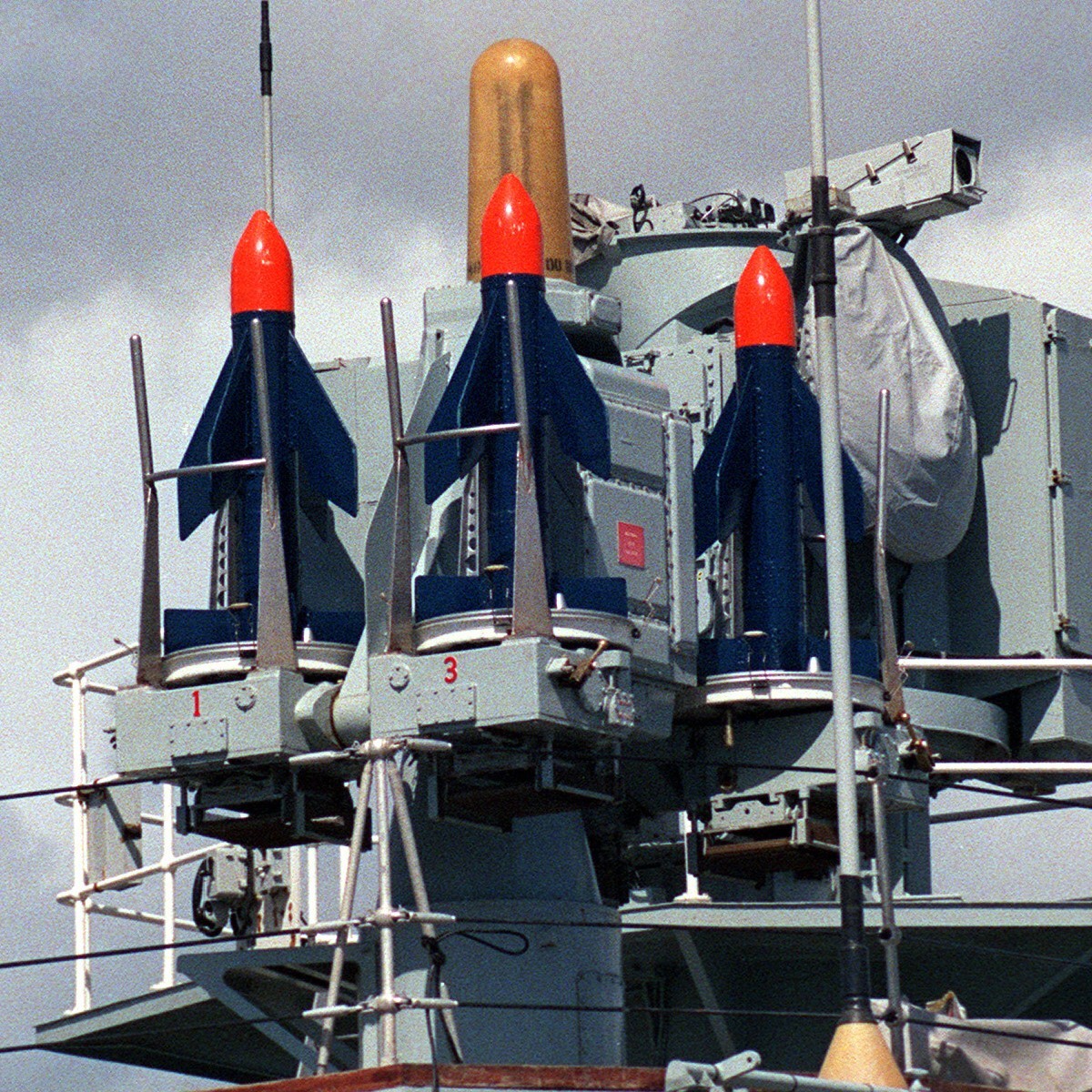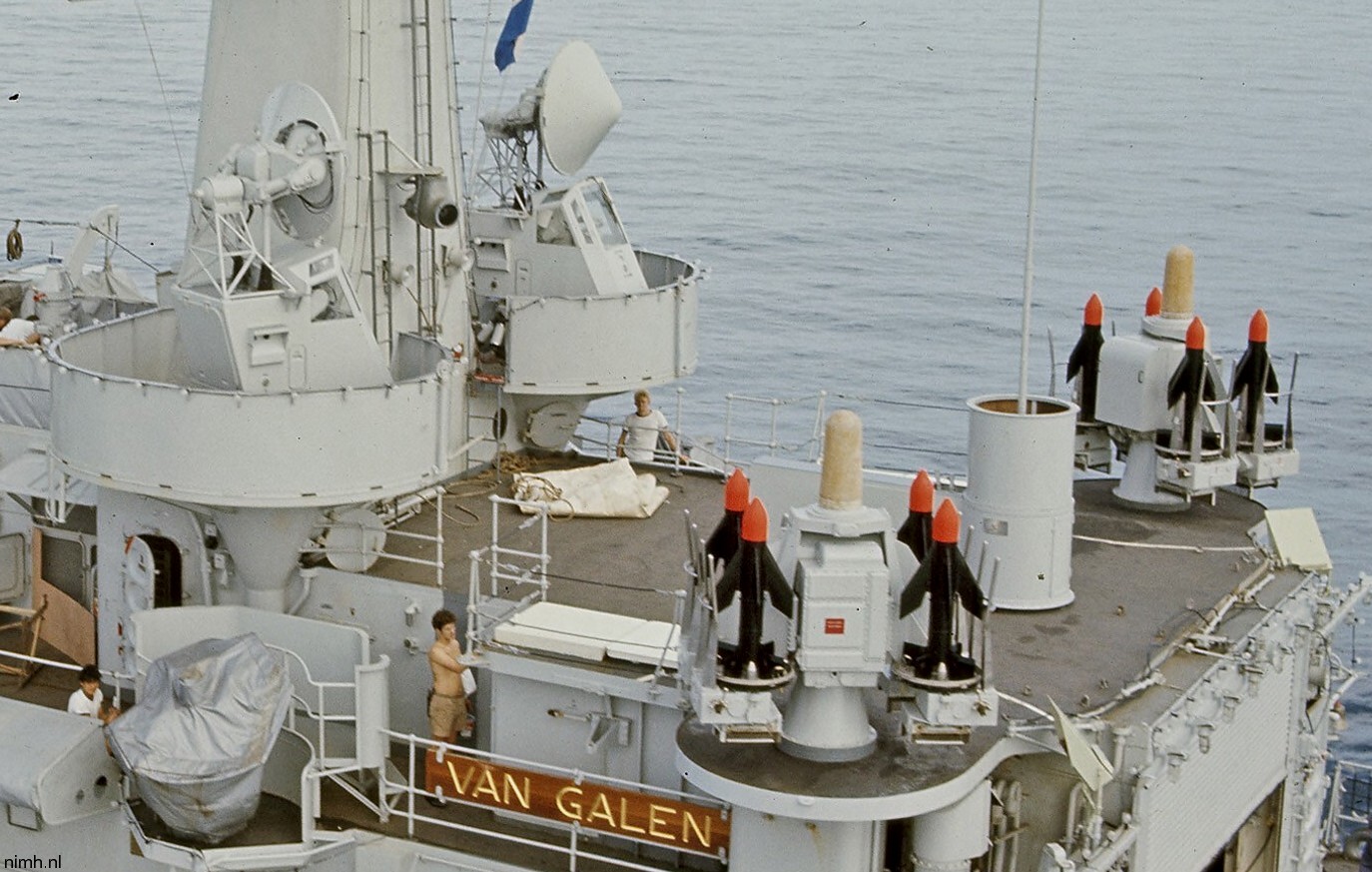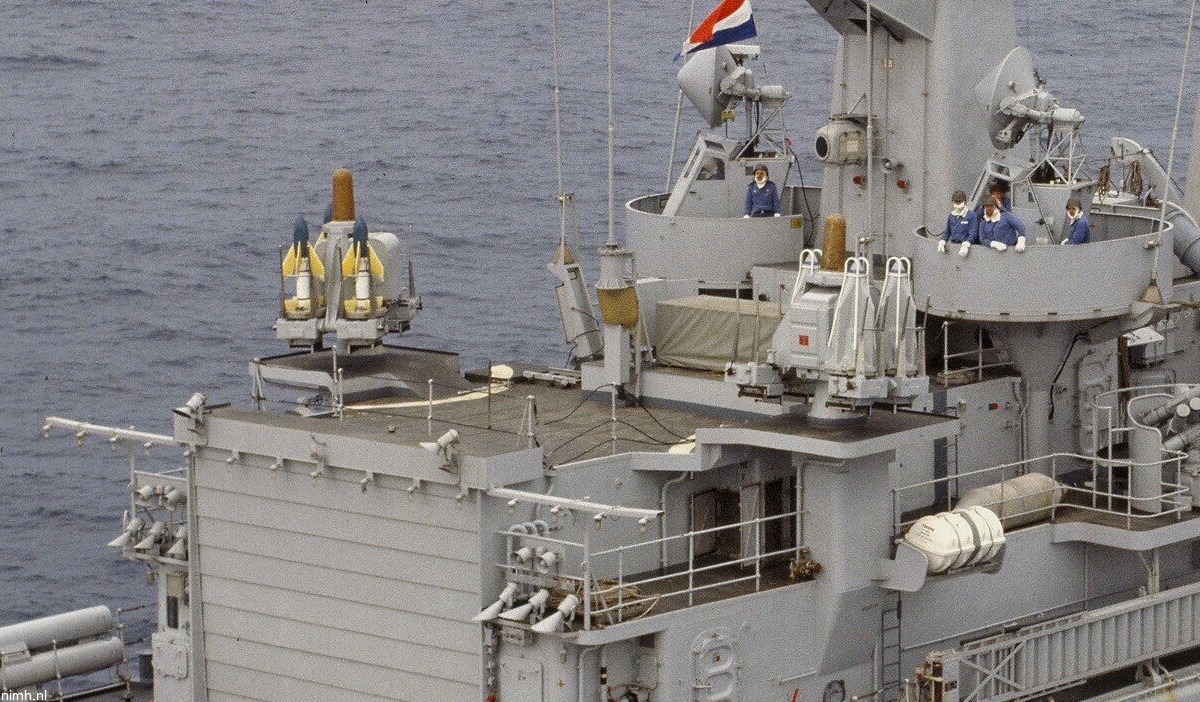 |
|
HOME
|
US Navy -
ships
|
US Navy - air
units
|
USMC - air
units
|
International
Navies
|
Weapon Systems
|
Special Reports |
|
Surface Vessel Weapon System Seacat SAM |
 |
| 01/25 |
|
Seacat was a British short-range surface-to-air missile system
intended to replace the ubiquitous Bofors 40 mm gun aboard warships
of all sizes. It was the world's first operational shipboard
point-defence missile system, and was designed so that the Bofors
guns could be replaced with minimum modification to the recipient
vessel and (originally) using existing fire-control systems. A
mobile land-based version of the system was known as Tigercat. The initial GWS.20 version was manually controlled, in keeping with the need for a rapidly developed and deployed system. Several variants followed; GWS.21 added radar-cued manual control for night and bad-weather use, GWS.22 added a SACLOS automatic guidance mode, and the final GWS.24 had fully automatic engagement. Tigercat saw relatively brief service before being replaced in British service by the Rapier, while Seacat saw longer service until being replaced by Sea Wolf and newer technology close-in weapons systems. Seacat and Tigercat were both successful in the export market. Design: The Seacat is a small, subsonic missile powered by a two-stage solid fuel rocket motor. It is steered in flight by four cruciformly arranged swept wings and is stabilised by four small tail fins. It is guided by command line-of-sight (CLOS) via a radio-link; i.e., flight commands are transmitted to it from a remote operator with both the missile and target in sight. In some senses it was no more than an initially unguided subsonic rocket that took the controller about 7 seconds or 500 yd (460 m) flight time to acquire and lock onto radar tracking and optical direction, making it unsuitable for close-in AA defence. Seacat was mounted on a powered four-round launcher which was smaller than the Mark 5 Twin Bofors and STAAG type mountings it replaced. It was also lighter, easier to maintain, and very easy to use. Variants: Initially, all Seacat installations used a 4-round, 6,600 lb (3,000 kg) trainable launcher, but a 3-round, 2,800 lb (1,300 kg) launcher was later developed. Both launchers were manually reloaded and carried an antenna for the radio command link. All that was required to fit the system to a ship was the installation of a launcher, the provision of a missile handling room and a suitable guidance system. Seacat was used by NATO and Commonwealth navies that purchased British equipment and was exported worldwide. It has also been integrated with a variety of alternative guidance systems, the most common being Dutch HSA systems. GWS-20: This - "Guided Weapon System 20" - was the initial system, which was intended to replace the twin 40 mm Bofors Mark V gun and its associated fire-control systems. The original director was based on the Simple Tachymetric Director (STD) and was entirely visual in operation. The target was acquired visually with the missile being guided, via a radio link, by the operator inputting commands on a joystick. Flares on the missile's tail fins aided identifying the missile. GWS-21 was the Seacat system associated with a modified Close Range Blind Fire analogue fire control director (CRBFD) with Type 262 radar. This offered manual radar-assisted (Dark Fire) tracking and guidance modes as well as 'eyeball' visual modes. GWS-22 was the Seacat system associated with the full MRS-3 fire control director with Type 904 radar and was the first ACLOS-capable (Automatic, Command Line-Of-Sight) Seacat. It could operate in automatic radar-guided (Blindfire), manual radar-guided, manual CCTV-guided or, in an emergency, 'eyeball' guided modes. It saw active service in the Falklands onboard all these classes. GWS-24 The final Royal Navy Seacat variant, this used the Italian Alenia Orion RTN-10X fire control system with Type 912 radar and was fitted only to the Type 21 frigate. This variant saw active service in the Falklands. Tigercat A land-based mobile version of Seacat based on a three-round, trailer-mounted launcher towed by a Land Rover with a second trailer carrying fire control equipment. Tigercat was used exclusively by 48 Squadron RAF Regiment between 1967 and 1978, before being replaced by Rapier. Designer/manufacturer: Short Brothers, Belfast,Northern Ireland, UK Specifications: Mass: 68 kg (150 lb) Length: 1.48 m (58 in) Diameter: 0.22 m (8.7 in) Wingspan: 0.70 m (28 in) Warhead: 40 lb (18 kg) continuous-rod warhead Detonation mechanism: proximity Engine: 2 stage solid fuel rocket motor Operational range: 500-5,000 m (1,600-16,400 ft) or more Maximum speed: Mach 0.8 Guidance system: command to line-of-sight (CLOS) and radio link source: wikipedia |
| images |
   with HSA M44 radar/optical directors aboard a Royal Netherlands Navy Van Speijk class Frigate  with HSA M44 radar/optical directors aboard a Royal Netherlands Navy Van Speijk class Frigate  |
|
|
seaforces.org
|
Weapon Systems
start page
| |